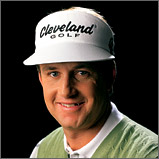 For the second time this week another professional golfer has been admitted to the hospital with a rapid rising heart rate. Meg Mallon had just enjoyed the closing ceremonies of the Solheim Cup in Carmel, Indiana when her rate climbed upwards to 290 beats per minute. To put that into perspective, cyclist Lance Armstrong during crucial stages of the Tour de France will rarely exceed 220 bpm. Yesterday after making the turn at the 84 Lumber Classic, PGA TOUR veteran David Toms was seen clutching his chest and taking a knee due to his escalated heart rate then being rushed to a hospital via helicopter where he is now in stable condition.
For the second time this week another professional golfer has been admitted to the hospital with a rapid rising heart rate. Meg Mallon had just enjoyed the closing ceremonies of the Solheim Cup in Carmel, Indiana when her rate climbed upwards to 290 beats per minute. To put that into perspective, cyclist Lance Armstrong during crucial stages of the Tour de France will rarely exceed 220 bpm. Yesterday after making the turn at the 84 Lumber Classic, PGA TOUR veteran David Toms was seen clutching his chest and taking a knee due to his escalated heart rate then being rushed to a hospital via helicopter where he is now in stable condition.
So what’s the cause of these two incidents? With David Toms still under observation and most likely a battery of tests we may not know for some time. However, Meg Mallon was diagnosed with Supraventricular tachycardia (SVT), which is an abnormal fast heart rhythm that starts in the upper chambers, or the atria, of the heart (Supraventricular means above the ventricles, tachy means fast, and cardia means heart.) Your heart is controlled by an electrical system that controls the rhythm and rate of your heart beats. During SVT your electrical system has a abnormal electrical connection which raises your heart rate 150 to 200 beats per minutes sometimes as high as 300. Your heart rate will drop after some time or after treatment to normal ranges of 60 to 100 bpm. SVT is another form of Atrial Fibrillation which is an irregular heart rhythm that is common, especially with older people and those in poor physical condition. Atrial fibrillation also increases your risk for strokes, a fibrillating heart allows blood to pool, in the atria. The pooled blood is more likely to form a clot and if the heart pumps the clot into the bloodstream, it can travel to the brain and block blood flow into the brain, causing a stroke.
In the past few years we’ve seen more and more professional golfers spending time with personal trainers and also in the new fitness trailers at tournaments. The majority of these golfers are looking for the competitive edge but many also see the personal benefits of having healthy bodies. Champions Tour member, Peter Jacobsen and many others have credited personal training and physical fitness and a blessing to keep them playing while missing few tournaments. Other athletes and critics often say golf isn’t a physical sport but tell that to the masses of golfers who have had knee and back surgeries due to the sometimes violent nature of the swing. Although sad for Meg and David it may serve as a great eye opener for the rest of the tours and to us that ensuring your heart is healthy can never be overdone.
Photo Credits: © Cleveland Golf.

It seems like the most likely performance enhancing drugs to be used in golf are beta blockers. Are these odd health effects by Mallon and Toms prossibly indicators of the use or abuse of beta blockers?
Golf swing tachycardia
My first and only attack of supra-ventricular tachycardia occurred back in 1969 and was clearly precipitated by a strong swing of a golf club during which I felt and heard borborigmi in my esophagus which coincided with the start of the tachycardia.
So I strongly believe that pressure on the atria from gasses in the esophagus, which lies behind the heart, is one of the main inducers of supra-ventricular tachycardia. The use of two arms in a golf swing constricts the rib cage tremendously at the end of the swing pushing the bloated esophagus against the atria of the heart. A one arm swing in other sports doesn’t constrict the chest as much.